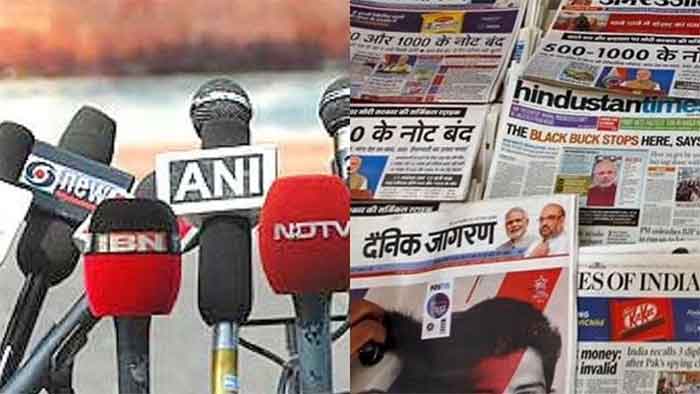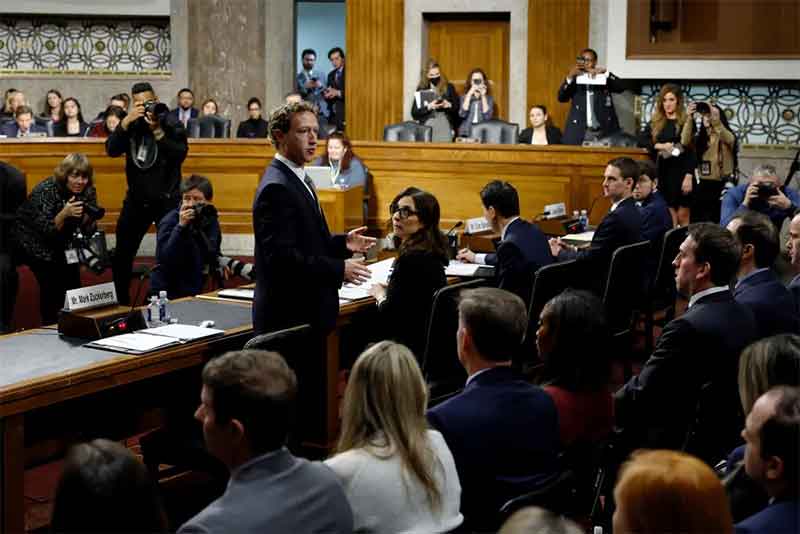
Civic participation in issues of public importance has been at the heart of many debates in our world history. Philosophers and theorists have attempted to determine how the ordinary citizen can grasp the external world with all its nuances and subtleties. Professor John Dewey believed in strengthening our citizenry through various means such as promoting logic & reason, scientific temperament, and improving methods of debate and discussion. Public opinion has been considered vital in safeguarding democratic interests and our social structure. These collective opinions on various issues of social and cultural significance give us an insight into the prevailing atmosphere in any society and what the future might look like. The last century has witnessed the growth and spread of the importance of public opinion, facilitated by evolving technological development. Today, the media also yields considerable power to influence the thought process of the masses in forming a particular public opinion. In a world marked by propaganda and constant reverberation of majoritarian ideas, we seem far from what Professor Dewey expounded upon ‘the transformation from a Great Society to a Great Community.’ In this light, we shall look at Elisabeth Noelle Neumann’s ‘Spiral of Silence’ theory.
Understanding Spiral of Silence
17th Century English Philosopher John Locke, in his treatise, An Essay Concerning Human Understanding, opined that man was subject to three laws: the divine law, the civil law, and, most importantly, in Locke’s judgement, the law of opinion or reputation. He claimed that the law of opinion is the only law by which people abide. Along similar lines in the 20th century, German Political Scientist Elisabeth Noelle-Neumann recognised the power of public opinion and defined it as ‘attitudes that one can express without running the danger of isolating oneself; a tangible force that keeps people in line.’
Neumann was constantly amazed by the human ability to assess the atmosphere around them. In her theory, she talks about a quasi-statistical organ, a sixth sense that tallies up information about what society, in general, is thinking and feeling. Even though this supposed sixth sense is not quantifiable, her research over the years pointed out that people spend tremendous amounts of energy observing which ideas are favoured and which are losing ground in society. And the prospect of siding with the prevailing opinion is any day better than being isolated or despised by our fellow beings.
To understand the growth and spread of public opinion, Neumann proposed her spiral of silence theory which referred to ‘the increasing pressure that people feel to conceal their views when they think that they are in the minority.’ According to Neumann, public opinions trigger a “spiralling” process that reveals the majority opinion; those individuals or groups who voice minority opinions are threatened with social isolation. This fear of social isolation is the centrifugal force that accelerates the spiral of silence. This form of isolation is not exclusively controlled at the broader societal levels. Instead, as Moy, Domke, & Stamm (2001) explained in their research, the threat of isolation comes from an individual’s reference groups (such as friends, family, neighbours, and co-workers) that they associate with on an everyday basis. For example, in Indian households or one’s peer groups, speaking against the atrocious caste system, politics of hatred, superstition, xenophobia, or any other social taboo invites flak or social isolation from our immediate circles.
The spiral process is considered the hallmark, as it increasingly establishes [a dominant] opinion as the prevailing one. The “spiralling” metaphor is vital, as it appears that the majority opinion is at the top of a “corkscrew,” “screwing-down” deviant opinions until they are effectively invisible. The minority opinion is pushed to the bottom by the majority opinion, which over time leads to a perception that theirs is a collective opinion held by the majority of society. The Spiral of silence is not necessarily bad, as in progressive and holistic environments, it keeps ‘hate’ out of the public discourse.
When people pointed out that there will always be a group that would voice its opinion regardless of being in the minority, Neumann described two types of individuals who form this vocal minority that remain at the top of the spiral in defiance of threats of isolation. She called them the hardcore non-conformists and the avant-garde (intellectuals, artists, and reformers in the isolated minority who speak out because they are convinced that they are ahead of the times). In contemporary times, tall figures like Journalist Mohammed Zubair, civil rights activists and scholars like Teesta Setalvad, Umar Khalid, and Sharjeel Imam have been leading the fight for safeguarding our constitutional rights and freedom of expression.
Media as the accelerator of the spiral
The role of mass media in shaping public opinion cannot be understated. Actively consuming media content and being part of various digital or physical ecosystems shape one’s thought process and behaviour. With the rise of corporate ownership and privatization, the media industry is actively de-skilling its labour force and building single-storied narratives that support the State and corporate interests. Such narratives cater to a particular viewpoint and one ideology, significantly accelerating the downward spiral by muting the minority opinion. According to Neumann, mass media also crafts stories in a highly-accessible manner to support a specific issue stance while simultaneously downplaying opposing arguments. A case which is well observed with India’s Godi Media ( a pejorative term coined and popularised by NDTV journalist Ravish Kumar for the heavily biased and sensationalist Print and Television media industry that outrightly supports the ruling BJP government). The same is true about the various mouthpieces of totalitarian regimes worldwide. Neumann suggests this constant influence of the media also leads the audience towards a condition called pluralistic ignorance, or people’s mistaken idea that everyone thinks as they do (an echo chamber).
Spiral of silence in the Digital Age: A case study by the Pew Research Centre
As the world ran asunder into an era of global interconnectivity, social media platforms were considered the new facilitators of discussions, engagement, and exchange of diverse opinions from around the world. However, a spiral of silence is observed on social media platforms, albeit slightly different from the spiral in physical spaces.
A study by Pew Research Centre provided some significant insights after Edward Snowden’s 2013 revelations of widespread government surveillance of Americans’ phone and email records. The study consisted of 1801 participants, and the finding revealed that 86% of Americans were willing to have an in-person conversation about the surveillance program, but just 42% of Facebook and Twitter users were willing to post about it on those platforms. And of the 14% of Americans unwilling to discuss the Snowden-NSA story in person with others, only 0.3% were willing to post about it on social media.
Prof. Keith Hampton, a key author of the study noted that “If people did not think that their friends and followers in social media agreed with them, they were less likely to say they would state their views online. In addition, if they felt that they were in the minority opinion amongst those who follow them through social media, they were also less willing to join a discussion on in-person situations, such as gatherings of friends or co-workers.”
Even though the study did not look into the causal factors of this spiral of silence, it was observed that even on the internet, the prospect of being ostracised, bullied or harassed for holding or expressing differing opinions deters users from actively sharing their views.
Contemporary Culture: Observations and Critiques
Since its formal proposal, Neumann’s spiral of silence theory gained a lot of prominence, becoming one of the most-researched communication theories that explain public opinion formation in a media environment. In the era of heightened propaganda and mass-influx of disinformation, our current socio-political discourse ignites along the lines of religious nationalism, corporate industrialisation, conservatism, etc. In contrast, matters of utmost importance like climate change, authoritarian excesses, human rights violations or feisty majoritarianism are rarely discussed. Even though digital media has bombarded its viewers with large quantities of news, questions over the quality of the information remain, where facts and objectivity are overlooked for emotive appeals and personal attacks. In this regard, contextualising the effects of the spiral of silence is recommended via practical assessment and application of the theory.
Over the years, scholars have pointed out certain flaws in the theory, such as over-reliance on isolation as a factor for not speaking out ( when it can be a case of disinterest, shyness etc.) and placing more importance on national climate rather than reference group opinion. These observations do not render the theory invalid but suggest the changing research paradigms to be further studied. In his research paper, Alexander Hopkins has also talked about the ‘certainty of opinion an individual holds’ as a variable which provides scope for further research.
In conclusion, Neumann’s theory has helped us understand how public opinion is cultivated and ultimately functions as a mechanism of social control. In the present context, the digitalisation of the public sphere ensures that the State and tech giants work together in formulating a ‘desirable’ public opinion and clamp down on specific ‘deviant’ ideas. The Spiral of silence can be countered by raising the level of civil discourse and promoting logic and reason in our daily affairs. And by looking up to the vocal minority of hardcore non-conformists and avant-garde as figures who shall lead us into a hopeful era in the not-so-distant future.
As Cervantes wrote in Don Quixote, “The truth may be stretched thin, but it never breaks, and it always surfaces above lies, as oil floats on water.”
Abdullah Kazmi is a postgraduate student of Media Studies at the University of Hyderabad, India.
















































